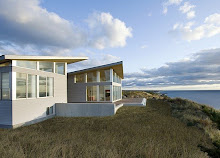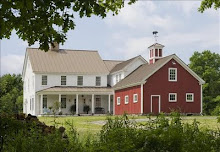March 19, 2010
A Safer Sleep - Choosing a Healthy Mattress
Since we spend a third of our life sleeping, the mattress on which you sleep should be free of off-gassing toxic chemicals and allergy triggers. That is not as easy to achieve as one might think, as product goals are often in conflict with one another.
Let me explain:
Organic Cotton
Benefit: Grown without pesticides, organic cotton is a far better environmental choice than traditionally grown cotton, which may be the single most polluted crop on the planet.
Issue: Many sensitive individuals find that they cannot tolerate organic cotton, as it is not stripped of its natural oils and aromas in the traditional bleaching process
Natural Latex
Benefit: Unlike its petroleum-based synthetic counterpart, natural latex provides resistance to dust mites, a common cause of allergy symptoms.
Issue: Latex is a major allergy trigger for some people.
Wool
Benefit: A natural flame retardant that naturally enables consumers to fulfill U.S. law that requires flame retardant in all mattresses -- which sadly means that most of the mattresses in this country are filled with toxic chemicals on which we sleep for 1/3rd of our lives -- a perfect example of how a well-intended goal (preventing death by fire) has done more harm than good in its execution (exposing adults and the more fragile developing bodies of babies and kids to significant toxicity levels).
Issue: Wool is also an allergen that can cause many people trouble.
The good news is that, if you are like me and have issues on all of the counts above, there is still an option.... an all-cotton bed. It requires a doctor's note that protects the manufacturer if they sell you a mattress without any flame retardant in it.
A great resource for beds that fit your environmental and personal goals can be found on "The Queen of Green" Debra Lynn Dadd's Green Living website.
After much review, I decided to try a 100% Cotton Chemical Free Mattress from White Lotus Home, with a note from the allergist. It met my personal health criteria, and was more affordable than many other alternatives, even after I splurged on the full 8" thickness instead of the standard 6". I expect that these beds will provide a very firm sleep, which is a personal preference. I will let you know how it works out.
March 11, 2010
Eco-friendly Speed Curing for Concrete Countertops
Concrete island counter installed and waiting for it's speed cure treatment...
Once made, concrete countertops can take up to 4 additional weeks to cure -- your countertop could be off-gassing in your home for some time after it arrives. Josh at J. Aaron Cast Stone countertops shared a simple tip with me that cuts that curing time by 80%. Simply wipe the entire surface with a mix of 1:1 vinegar and water. Is there anything that vinegar can't do? :) CLARIFICATION - Check with your manufacturer, as other countertops from different suppliers may be destroyed by this method. Thank you, Josh for the clarification!!
Integral drain board in custom concrete countertop. Photo: J. Aaron Cast Stone.
March 9, 2010
Avocados, Walking the Talk, and Living With What We Need
Avocados. Yum. Creamy ripe avocados. I can just taste the delicious guacamole I could whip up with dinner tonight. But what do avocados have to do with healthy, sustainable home construction? I'll get to that in a minute.
Walking The Talk
It is a lucky feeling indeed to believe that the construction of your home is in able hands. To further say that your construction site supervisor is a deeply caring and meticulous steward of your healthy + green home is truly a privilege. THE CONCORD GREEN HOME has benefited from the knowledge, experience and wisdom of just such a person. Not only is Patrick Hughes a skilled craftsman, he embodies what is good in the movement to be more responsible humans on this delicate planet. Thank goodness Aedi Construction found Patrick just as they were awarded our project.
Patrick Hughes, construction site supervisor for THE CONCORD GREEN HOME, environmentalist, author and poet, skilled craftsman, musician, and more - a modern day Renaissance Man.
Patrick took the bold and empowering step of transforming his career to match his values. After overseeing the construction of large estates and municipal buildings, Patrick now works primarily on projects that embody the sustainable principles in which he so fervently believes.
A sample of his writings will give you a better glimpse of the man.
Living With What We Need
Here is an excerpt from a sermon Patrick gave at a local church on sustainability. Would have loved to be in the pews that day.
"...if we didn’t desire those commodities that are outside our reach, then maybe we could find a way to live without them. What becomes the central theme of our evolution is ... we have only been a short while on this earth, and it was a paradise before we ate at the tree of knowledge, left the garden and in our quest to get back to that paradise, started trying to improve the world we were given to live in. But the path chosen was the one where we always took more than we needed so that the delicate balance needed to sustain life on earth is always straining to keep up."
Patrick's point, made so eloquently by his recasting of the nine levels of hell in Dante's Inferno as a rating system of our own "greenness" in relation to our consumption of avocados, is that we can learn to live with what is abundantly available to us, rather than pressing for more. As the old cliche goes, Less IS More. If you don't live where avocados grow naturally, eat something else that is locally grown and just as delicious... or grow your own. :)
Photo: Garden Web "Avocado Tree"
For Patrick's complete sermon, click here. Enjoy, live well and do it with a sense of purpose.
Labels:
green building,
healthy house,
recycling,
sustainable
March 8, 2010
Choosing a Tub for an Energy-Efficient Home
THE CONCORD GREEN HEALTHY HOME now has a lovely boat-style tub standing in the Master Bath. It's framed by painted wainscot planking on the walls, and sandy large-format tiles on the floor, laid in an offset running bond pattern. Tub filler by Porcher.
The choices in tubs these days can be overwhelming. Here are the criteria I used in selecting one for this eco-friendly home.
Material - If possible, I recommend purchasing a tub made from cast iron, a timeless material that has been prized over the years for its many benefits. Better than enameled steel -- which conducts heat right out of your bath water -- cast iron will keep your bath toasty warm. Plus, it will feel solid as you step in. Acrylic and fiberglass were avoided, which are both plastic, and prone to damage. Cast iron is heavy, so be sure that your floor is sturdy enough to support the tub, the water and you. It is also expensive -- look for vintage tubs (the best), or discontinued models to save money.
Shape - This tub's skinny shape provides the user with a deep soak experience while using a lot less water. Plus, the boat style is a classic that suits the farmhouse architecture of the home.
Extra features - None. Whirlpool jets and air jets were avoided, as they are high maintenance and become traps for mold. Plus, those features add to your energy consumption load with every soak you take.
Labels:
bathrooms,
interior design,
mold,
sustainable
March 4, 2010
Finding a Construction Loan for a Panelized Home
Securing a construction loan can be tough. It can be MUCH tougher when you are trying to buck tradition and build in a non-conventional way, such as building a panelized or prefabricated home. Most banks are simply not set up to fund construction before each component is fully assembled onsite. Typically, payments are made after each phase of work is installed.

Luckily for this project, one bank came through and made THE CONCORD GREEN HEALTHY HOME possible. Middlesex Savings Bank, a local mutual savings bank here in Massachusetts, had the vision to support panelized construction, and, as importantly, the flexibility to help fund pre-construction that was happening in Vermont before it even arrived on site in Massachusetts.
If you are considering panelized or pre-fab construction, contact your bank as soon as possible to learn whether they can help you with this particular building strategy. If not, ask your builder -- they have likely navigated these waters before. As with any other aspect of building green, going local can be the best option.
Thank you to Paul Adams and and the rest of the Middlesex Savings team for their invaluable support.
March 3, 2010
10 Feet of Concrete
 The massive J. Aaron concrete island arrived this morning. It took 7 strong men to install it in THE CONCORD GREEN HEALTHY HOME kitchen.
The massive J. Aaron concrete island arrived this morning. It took 7 strong men to install it in THE CONCORD GREEN HEALTHY HOME kitchen. At 10' x 3.5' x 2" thick, this slab weighs over 800 lbs.
At 10' x 3.5' x 2" thick, this slab weighs over 800 lbs.
The concrete counter is paired with a classic Shaws Original farmhouse sink salvaged from a recent kitchen renovation...

... and a Perrin & Rowe satin nickel faucet.
Labels:
interior design,
kitchens,
reclaimed,
recycling,
sustainable
Subscribe to:
Comments (Atom)








































